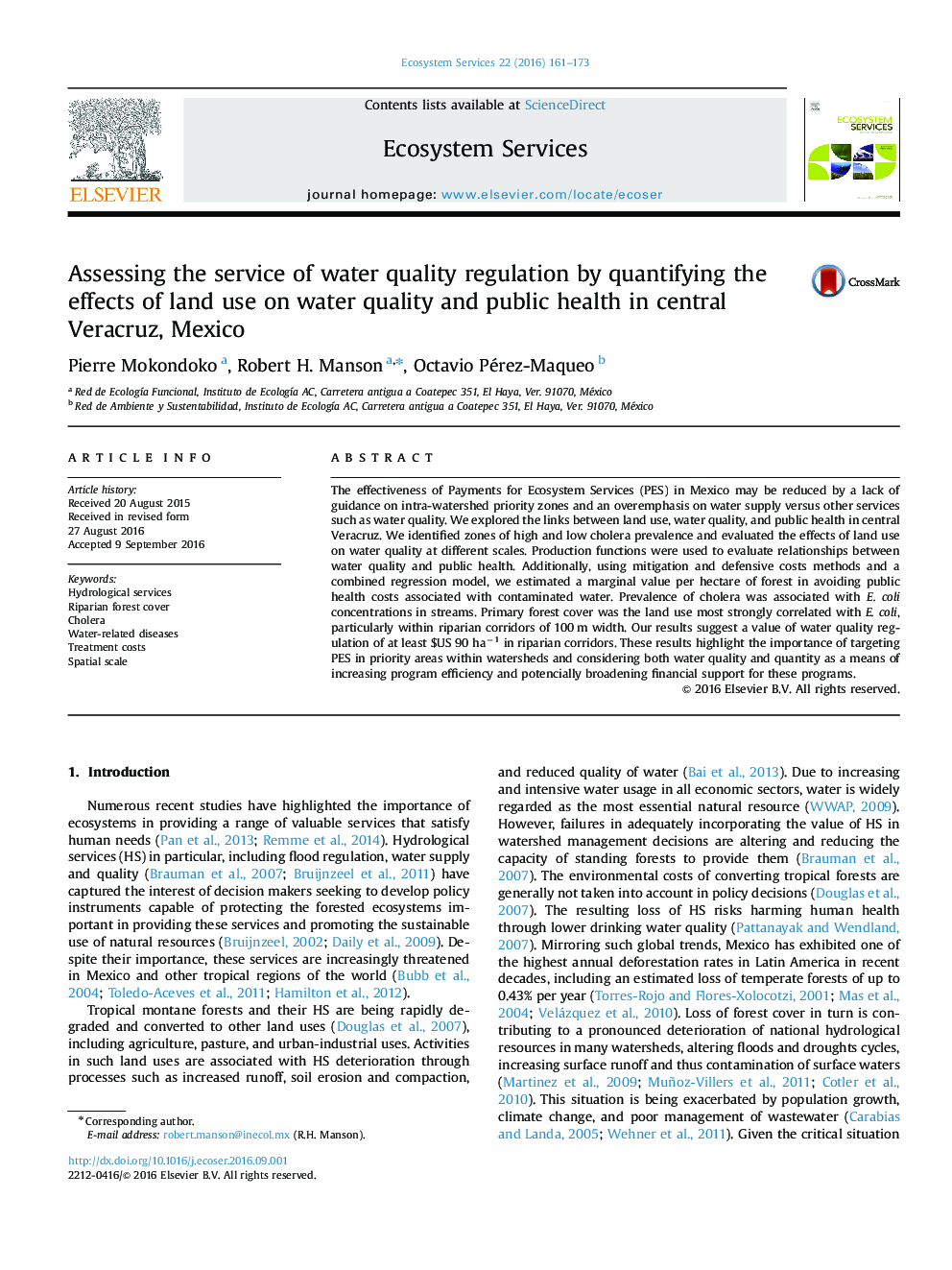| Article ID | Journal | Published Year | Pages | File Type |
|---|---|---|---|---|
| 4761649 | Ecosystem Services | 2016 | 13 Pages |
Abstract
The effectiveness of Payments for Ecosystem Services (PES) in Mexico may be reduced by a lack of guidance on intra-watershed priority zones and an overemphasis on water supply versus other services such as water quality. We explored the links between land use, water quality, and public health in central Veracruz. We identified zones of high and low cholera prevalence and evaluated the effects of land use on water quality at different scales. Production functions were used to evaluate relationships between water quality and public health. Additionally, using mitigation and defensive costs methods and a combined regression model, we estimated a marginal value per hectare of forest in avoiding public health costs associated with contaminated water. Prevalence of cholera was associated with E. coli concentrations in streams. Primary forest cover was the land use most strongly correlated with E. coli, particularly within riparian corridors of 100Â m width. Our results suggest a value of water quality regulation of at least $US 90Â haâ1 in riparian corridors. These results highlight the importance of targeting PES in priority areas within watersheds and considering both water quality and quantity as a means of increasing program efficiency and potencially broadening financial support for these programs.
Related Topics
Life Sciences
Agricultural and Biological Sciences
Agricultural and Biological Sciences (General)
Authors
Pierre Mokondoko, Robert H. Manson, Octavio Pérez-Maqueo,
